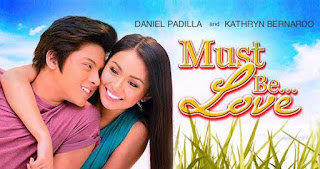A Cinderella Story: Fitting the Cultural Beauty Standards
As most avid viewers of the satirical comedy Jane the Virgin, I ultimately considered the series to be a telenovela, without knowledge of what truly makes a telenovela. Wanting to learn more about how the production draws audiences and which social issues are addressed are the reasons I joined this particular first-year seminar. In the most recent lecture, we discussed that many social issues are portrayed, even denounced through television.
As a Filipina, I have a tanner complexion than what is socially acceptable in the Philippines. It is considered a stigma and is usually associated with lower-class families. When I was growing up in school, other students accused me of receiving “special treatment” from teachers only because of my skin color, which is completely unavoidable on my part. Additionally, many other Filipinos urged me to use skin lightening products because having a whiter complexion was their beauty standard.
To illustrate, in a Filipino movie named “Must Be… Love” the female main character was considered ugly because she never wore dresses and skirts like every other girl and also had tan skin. By the end of the movie, she went through a transformation in which she started doing her hair and makeup, even using skin whitening products to alter her appearance. I immediately was disappointed with the movie's subtle message. Why are they teaching younger and even older audiences that having darker skin was not beautiful?
I was surprised to learn that having a whiter complexion was also a beauty standard of Latin America. “Yo Soy Betty, La Fea” is my telenovela of choice for the class so I can learn more about the cultural standards in comparison to those of the Philippines. This Colombian telenovela shows a girl with braces and unique fashion who also eventually transitions into a girl who ultimately fits the cultural beauty standard, resembling sort of a Cinderella plot that most traditional telenovelas follow.
Aside from discovering certain social issues that are common among different cultures, I learned many attributes and the history of telenovelas, yet I still have more to discover. Watching the most recreated story of "Yo Soy Betty, La Fea" will help me grasp what truly makes a telenovela.

This comment has been removed by the author.
ReplyDeleteHi Andrea! I'm a huge fan of Jane the Virgin too, and definitely considered it a telenovela before this class. I liked that you pointed out how colorism is a very global issue. I had heard about colorism in Asian cultures, like what you described in the Philippines, but also in Caribbean countries like Jamaica. Unfortunately, it didn't surprise me to find out that this is a problem that plagues Latin American cultures as well. Entertainment has the power to either enforce or deny beauty standards, and I think that's an incredibly important thing to keep in mind. I hope that as you watch your telenovela, you can get a better idea of how the two connect. I feel like it would be really interesting!
ReplyDeleteIt's so heartbreaking to hear that you had experiences with discrimination because of the color of your skin. To be surrounded by many societies that believe that beauty is defined as having long hair, light skin, wearing dresses, and wearing makeup is pressuring. I remember my high school teacher telling me about her trip to Korea and how she constantly saw advertisements for skin whitening products plastered everywhere. When I went to Asia, I saw many "before and after" pictures of people who received skin lightening treatments and it made me uncomfortable because this is what some people have come to accept. Despite all this, there have been changes to beauty standards around the world. There are more and more actresses who do not fit these traditional beauty standards and it's refreshing to see.
ReplyDeleteI really like your blog post because I think that the connection that you have with your own personal experiences of racism and the connection of it to certain telenovelas helps show that it is a real problem in the world, and that producers of telenovelas should work toward different portrayal of their characters. For example, when you said that it didn't seem right for the telenovela "Must Be... Love" to show people that you should change yourself to fit a certain beauty standard, I thought about how beauty standards are a common societal dilemma today. All people are beautiful in my opinion, although lots of people don't feel this way due to the insecurities that media consumption brings. I think telenovelas should embrace people's differences and show that beauty comes with one's personality, courageousness, and power. Not their looks. It is important when watching a telenovela, or any other form of media, to keep the idea that beauty comes from within a person in mind. Also, I would love to watch "Yo Soy Betty, La Fea" to see how this telenovela portrays beauty standards out of pure curiosity. I love transformation movies because a transition can be satisfying to watch, like that in "The Princess Diaries," but also I am starting to realize that the messages that they can portray can be misleading and not beneficial to society's character. Makeovers can be a nice thing to have, especially because they can allow a person to feel more confident and "beautiful" but it is when the mindset of "oh I don't look a certain way so I'm not good enough" comes about that can lead to negative mental health consequences for individuals in society.
ReplyDelete